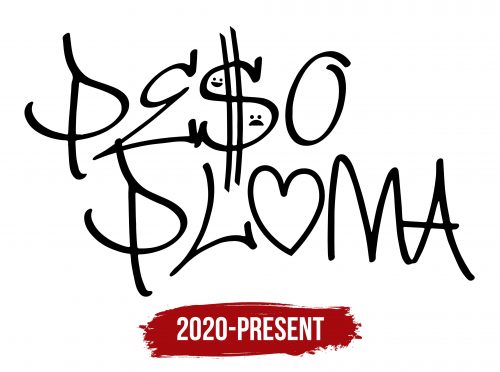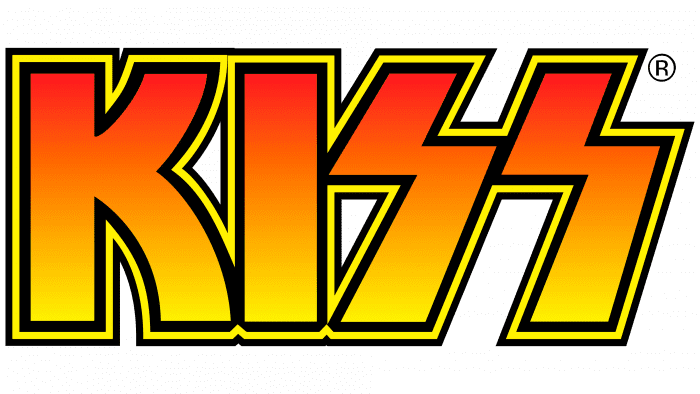The Mexican musician Kabande Laija’s distinctive individuality is evident in his creative work, appearance, and stage pseudonym. The Peso Pluma logo also conveys the singer’s unique image, not directly, but through visual symbols. The emblem showcases various aspects of his personality—both positive and negative.
Peso Pluma: Brand overview
In reality, Peso Pluma is named Hassan Emilio Kabande Laija. He is a Mexican, fond of extravagant mallet haircuts, and has a raspy voice, accentuating the sound of the trombone, alto horn, tololoche, and requinto. As a child, he dreamed of becoming a professional athlete, but attempts at playing guitar and writing songs led Kabande to worldwide fame as a musician. He stands at the forefront of the corrido genre, skillfully blending it with reggaeton and Latin trap. The singer himself calls his style Regional Urban. He gained fame in 2022 after releasing the single El Belicon, which became an anthem for narcocorrido. His next hit, Ella Baila Sola, was released in 2023 and immediately topped the Spotify charts. Thus, Peso Pluma earned the most popular Mexican musician title, surpassing Bad Bunny.
Peso Pluma, born on June 15, 1999, in Guadalajara, Jalisco, Mexico, has shown a deep love for music from a young age. As a teenager, he started writing songs, hinting at his future in music.
By 2020, he used social media, like TikTok, to share his songs, mixing traditional Mexican corridos with modern hip-hop and trap. This new blend quickly grabbed people’s attention, making him a rising name in music.
His big moment came in 2021 with the song “Soy El Diablo,” which he made with Natanael Cano. It wasn’t just a hit in Mexico; it also got noticed by big music companies, marking a key point in his career.
In 2022, after signing with Prajin Parlay Music Group and Sony Music Latin, Peso Pluma released popular songs like “Ella Baila Sola” and “AMG,” which were hits in Mexico and caught attention worldwide.
His music, which often talks about life on the streets, struggles, and making it big, connects well with young listeners because of its humor, thoughtfulness, and honesty. His style, known as trap corrido or trap sierreño, is part of a new trend in regional Mexican music that mixes traditional sounds with modern music styles.
In 2023, he worked with well-known artists like Becky G and Edgar Barrera, expanding his fan base and confirming his place as an emerging star.
Despite being young, Peso Pluma has become an important artist in regional Mexican music. He is loved for his fresh style and real lyrics. He’s opening doors for new Mexican artists and bringing traditional music styles to a broader audience, making him one of the shining stars of Latin music today.
Meaning and History
Even before 2020, Hassan Emilio Kabande Laija, his cousin Roberto Laija Garcia, and several friends launched a joint musical project. Looking at their slim physique, Mexican boxer Marco Antonio Barrera jokingly called them Peso Pluma. This term translates from Spanish as “featherweight” and refers to fighters who weigh less than 126 pounds. When Kabande began his professional music career, he retained the humorous pseudonym. Moreover, there is self-irony not only in the singer’s stage name but also in his logo. It depicts conflicting emotions: sadness, joy, love for people, and money, expressed through graphic symbols cleverly intertwined with the brand name.
What is Peso Pluma?
Peso Pluma is the stage pseudonym of Hassan Emilio Kabande Laija. He is the first Mexican singer invited to perform at the MTV Video Music Awards. His artistic journey began in his teenage years when he learned to play the guitar. In 2020, he released his debut album, followed by another a year later. But real fame came to him only in 2022 after the release of the song El Belicon, which is dedicated to drug cartels. The video for the song garnered 10 million YouTube views in just a few days. Peso Pluma reminded everyone of himself again in 2023, recording the song Ella Baila Sola. It reached the top spots on the Spotify and Billboard Global 200 charts.
2020 – today
The Peso Pluma logo plays on his pseudonym. It is handwritten with a black marker or felt-tip pen, so each glyph has a unique shape.
- Both capital “P”s resemble the lowercase Greek letter “φ” (phi) but with an additional long line on top.
- “E” looks like the number “3” turned to the opposite side. A sharp angle forms its bottom, while the top includes a curve.
- “S” is reminiscent of the dollar symbol, as two vertical lines cross it. This sign is also used to represent the peso – the currency of Mexico and other countries that emerged in the territory of Spanish colonies.
- The “O” in the first word is shaped like an open oval, and the second “O” is replaced by a heart image.
- “L” comprises diagonal lines forming a sharp angle at their junction. They smoothly curve, maintaining a sense of dynamism.
- “M” and “A” merge into one whimsical structure. Their peaks are tilted in different directions.
The designers deliberately included the dollar symbol in the logo to show Peso Pluma’s connection to the narcocorrido musical genre, which sheds light on themes of drug cartels, corruption, crime, and poverty. The adjacent heart appears as an expression of love for wealth. However, not everything in the emblem is so straightforward. For example, in the curves of “S,” there are two smiley faces: happy and sad. This represents opposite emotions – a reminder that great wealth can bring happiness and sorrow.
Font and Colors
Peso Pluma’s individuality is expressed through the logo, where each letter has a unique shape. The inscription is hand-drawn without the use of standard fonts. Although some glyphs are replaced with symbolic pictograms, the singer’s stage name remains recognizable even in this form.
On the contrary, the emblem’s color palette contains nothing extravagant. The classic combination of black and white indicates the musician’s desire to appear serious and distinguished.
FAQ
Is Peso Pluma a Gemini?
Peso Pluma, born on June 15, 1999, is a Gemini, the third astrological sign in the zodiac, symbolized by the twins. From May 21 to June 20, people born under this sign are known for their adaptability, intelligence, and communication ability, traits influenced by their ruling planet, Mercury. Mercury governs communication and the exchange of ideas, evident in Geminis’ varied interests and versatile personalities.
This versatility is clear in Peso Pluma’s career. He mixes traditional Mexican corrido music with modern hip-hop and trap, showing Gemini’s ability to combine different ideas. His music connects with many people, and he has quickly made a name for himself thanks to his adaptable nature and communication skills.
Geminis are curious and like to express themselves differently, which matches Peso Pluma’s early interest in music and songwriting. His willingness to explore various themes in his songs, from life’s challenges to victories, showcases the Gemini characteristics of versatility and a desire for expression. Overall, Peso Pluma’s birth sign of Gemini shines through in his innovative music style and way of connecting with audiences, embodying the sign’s essence through his work.
Where is Peso Pluma parents from?
Peso Pluma, born Hassan Emilio Kabande Laija on June 15, 1999, in Zapopan, Jalisco, Mexico, comes from a family with Mexican and Lebanese roots. His mother’s side is from Badiraguato, Sinaloa, a place with a strong musical tradition, which likely sparked his interest in music from a young age. His father is of Lebanese descent and was born in Chiapas, Mexico. This unique combination of backgrounds has significantly shaped Peso Pluma’s music, giving him a distinct style that blends traditional Mexican corridos with the contemporary sounds of hip-hop and trap.
Growing up surrounded by diverse musical and cultural influences, Peso Pluma developed a sound that stands out in the regional Mexican music scene. His music is a testament to his heritage, mixing various traditions and styles that speak to a wide audience and represent the voice of a new generation in the genre.
His family’s roots deeply influence Peso Pluma’s music in Sinaloa and Chiapas and his father’s Lebanese heritage. This blend of cultures has given him a unique outlook and depth in his music, making him a standout artist pushing the boundaries of regional Mexican music and introducing it to new audiences.
Is Peso Pluma Russian?
Peso Pluma, real name Hassan Emilio Kabande Laija, is not Russian. He was born in 1999 in Guadalajara, Mexico, a fact he celebrates with a tattoo on his neck. He comes from a family with a rich heritage, blending Lebanese and Mexican cultures. His father is of Lebanese descent from Guadalajara, and his mother is from Culiacán in Sinaloa, Mexico. Growing up, Peso Pluma spent time in Culiacán, where he was immersed in the local music and culture, significantly influencing his artistic development.
In his music career, Peso Pluma has made a name for himself in the regional Mexican music scene. He is known for creatively mixing traditional Mexican music with elements of hip-hop and trap. His music has a broad appeal, but it stays true to his Mexican roots and is enriched by his unique background. This deep connection to where he comes from is a key part of his identity as an artist, setting him apart in the music world and endearing him to fans everywhere.







